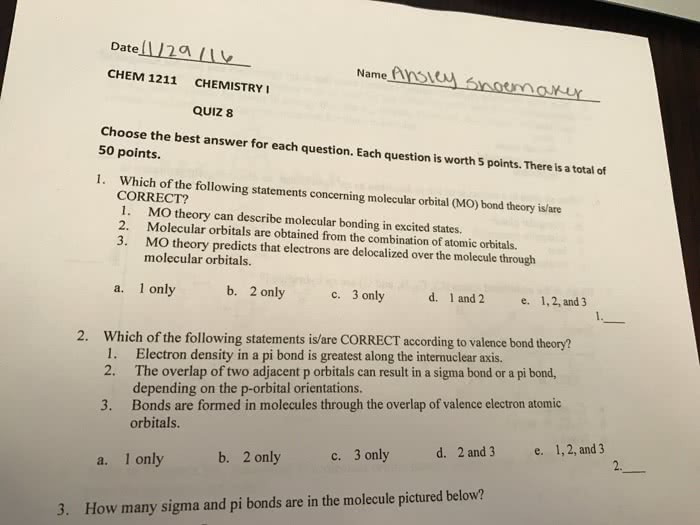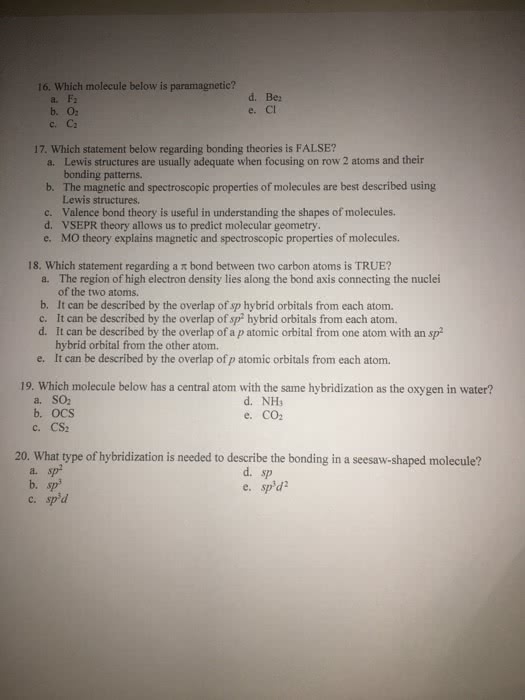CHEM 112 Chapter Notes - Chapter 11.5 and 11.2: Molecular Orbital Theory, Pauli Exclusion Principle, Atomic Orbital
Document Summary
The region of high electron probability in a hydrogen atom is the 1s orbital. As the two hydrogen atoms approach each other their atomic orbitals overlap and a covalent bond can be formed. Bond formation involves an increase in electron probability density between two positively charged nuclei. Description of covalent bonds formed in terms of atomic orbital overlap is called valence bond theory. The creation of a covalent bond in the valence bond method is normally based on the overlap of half filled orbitals. Core electrons and lone pair electrons retain the same orbital locations as in the separated atoms but the bonding electrons do not. Instead they are described by an electron probability density that includes the region of orbital overlap and both nuclei. Lewis structures, vsepr theory and valence bond theory are satisfactory to explain covalent bonds and molecular structures. None of these methods explain why oxygen is paramagnetic or why h2.



